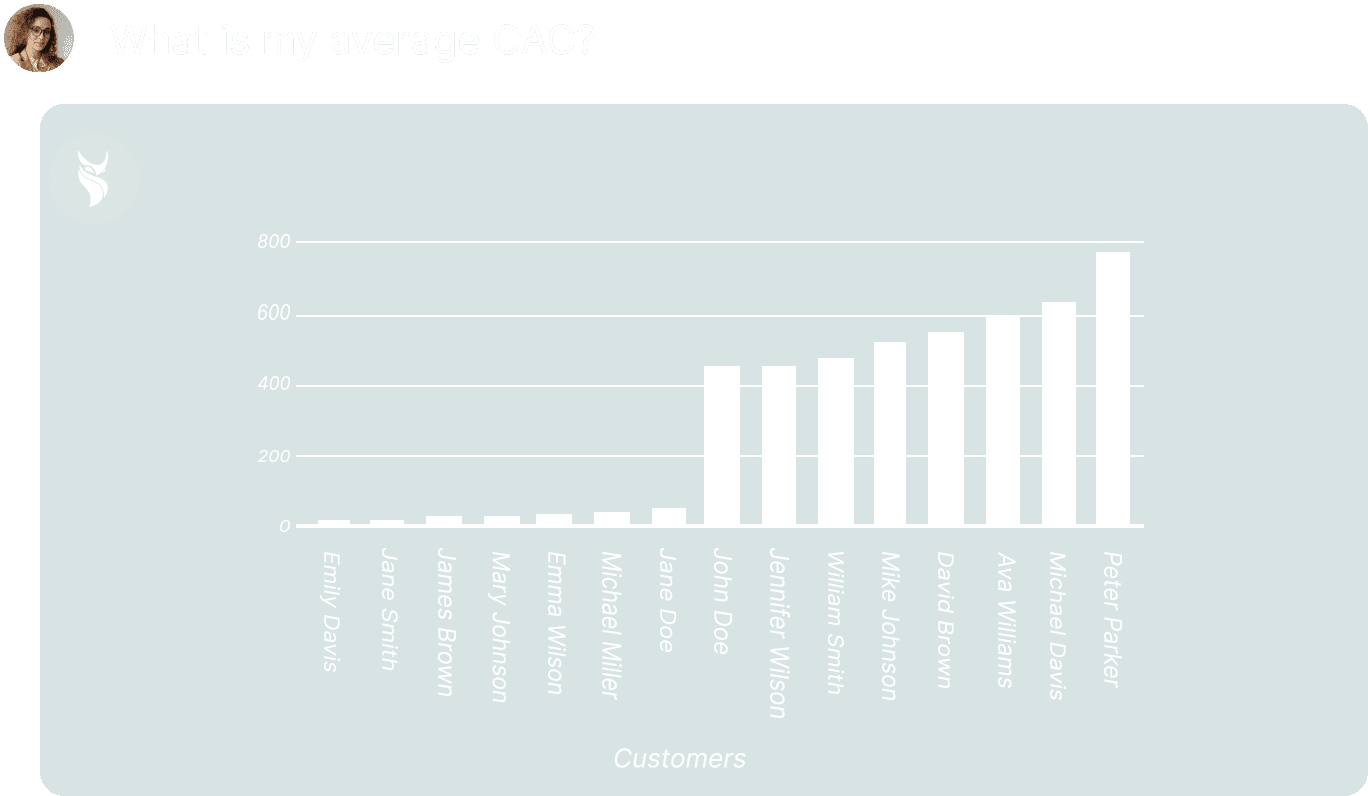8 important sales metrics for an early stage startup

Building a successful startup hinges on one crucial factor: mastering your sales metrics.
In this guide, we’ll unravel the 8 important sales metrics for an early-stage startup, transforming them from abstract concepts into tangible tools in your arsenal.
Whether it’s evaluating your customer’s true value or navigating the nuances of your investment returns, we’ve got you covered.
Let’s begin.
1. Average Revenue Per Account (ARPA)
ARPA tells you how much each account is worth on average. High ARPA? You’re likely offering high-value solutions or successfully upselling.
Here’s how you calculate it:
ARPA = Total revenue in a period / number of accounts during the same period
2. Conversion Rate: SQL to Deal Won
Your journey from a Sales Qualified Lead (SQL) to a ‘Deal Won’ might just be the most important metric to track.
This is because it helps you understand where in the sales process you’re excelling or need improvement.
Here’s how you calculate it:
Conversion rate = SQLs / number of deals won x 100
3. Net Promoter Score (NPS)
NPS isn’t just a number. It’s the voice of your customers telling you how likely they are to recommend your product or service.
A high NPS indicates satisfied customers who will rave about your startup.
Here’s how you calculate your NPS:
NPS = % of Promoters – % of Detractors x 100
Promoters
- Definition: Promoters are customers who are highly satisfied with your product or service and are likely to recommend it to others.
- Scoring: In an NPS survey, promoters are those who respond with a score of 9 or 10 on a scale from 0 to 10, where 10 indicates extremely likely to recommend.
- Characteristics: They are enthusiastic and loyal customers who can drive organic growth for your business through positive word-of-mouth.
Detractors
- Definition: Detractors are customers who are unsatisfied with your product or service and are unlikely to recommend it. They might even discourage others from using it.
- Scoring: In the NPS survey, detractors are identified as those who respond with a score between 0 and 6
- Characteristics: Detractors can harm your brand’s reputation and potentially hinder growth due to negative word-of-mouth. Their feedback, however, can be invaluable in identifying areas for improvement.
4. Customer Acquisition Cost (CAC)
CAC is a window into the efficiency of your sales and marketing efforts. In simple terms, it’s the cost of acquiring a new customer.
CAC = Total sales and marketing expenses / total number of customers acquired
High CAC signals the need to streamline marketing strategies or improve sales efficiency. But keep in mind that CAC varies widely across industries like manufacturing, finance, retail, and healthcare, so benchmark against industry standards.
Discover how Seraf can unravel your most important sales metrics in an instant!
5. Customer Lifetime Value (CLTV)
CLTV is the total worth of a customer to your business over the whole period of their relationship.
It’s a prediction of the net profit attributed to the entire future relationship with a customer.
CAC = Average Purchase Value × Purchase Frequency × Customer Lifespan
Average Purchase Value: Calculate this by dividing total revenue over a certain period by the number of purchases in that period.
Purchase Frequency: This is the average number of times a customer makes a purchase within a given time frame.
Customer Lifespan: This is the average number of years a customer continues purchasing from your startup.
Sifting through numerous tools to find these metrics can be draining. Check out our blog on the use of AI chatbots for instant information retrieval.
6. Retention Rate
Retention rate measures the percentage of customers you keep relative to the number you had at the start of a period.
It’s a direct indicator of customer satisfaction and product/service relevance.
Retention Rate = Number of new customers for selected period – number of customers at the end of that period / the number of customers at the start of the period x 100
Maximizing Retention Rate
Customer engagement: High retention rates often result from strong customer relationships.
Feedback loop: Use customer feedback to improve products and services, directly impacting retention.
Industry benchmarks: Compare your retention rates with industry standards to gauge performance.
7. Average Deal Size
This metric indicates the average revenue generated per deal.
It’s pivotal in understanding your sales effectiveness and guiding pricing strategies.
Average Deal Size = Total revenue / number of deals
Enhancing Deal Size
Upsell strategies: Increasing deal size can be achieved through effective upselling or cross-selling.
Pricing models: Consider your industry norms and what customer are willing to pay when setting prices.
Sales focus: Tailoring sales efforts towards higher-value deals can significantly impact this metric.
8. Opportunity to Win Rate
This metric measures your success rate in converting sales opportunities into actual sales. It’s a critical indicator of your sales team’s effectiveness and your product’s market fit.
Opportunity to Win Rate = Number of deals closed / total number of opportunities x 100
Remember that opportunities are not the same as SQLs. An SQL is a potential customer showing interest, while an opportunity is a lead actively considering a purchase.
Final thoughts
With these detailed insights into each of the eight essential sales metrics, you’re now equipped to analyze, interpret, and apply this knowledge to your startup’s sales strategy.
Remember, each metric offers unique insights and, when used together, they can provide a comprehensive view of your startup’s sales health and potential areas for growth.
Looking for a quick way to unravel your sales metrics? Just ask Seraf and it will provide quick, visual answers by searching across all your company data.
Get valuable insights about AI and business automation
Ready to level up your sales game?






